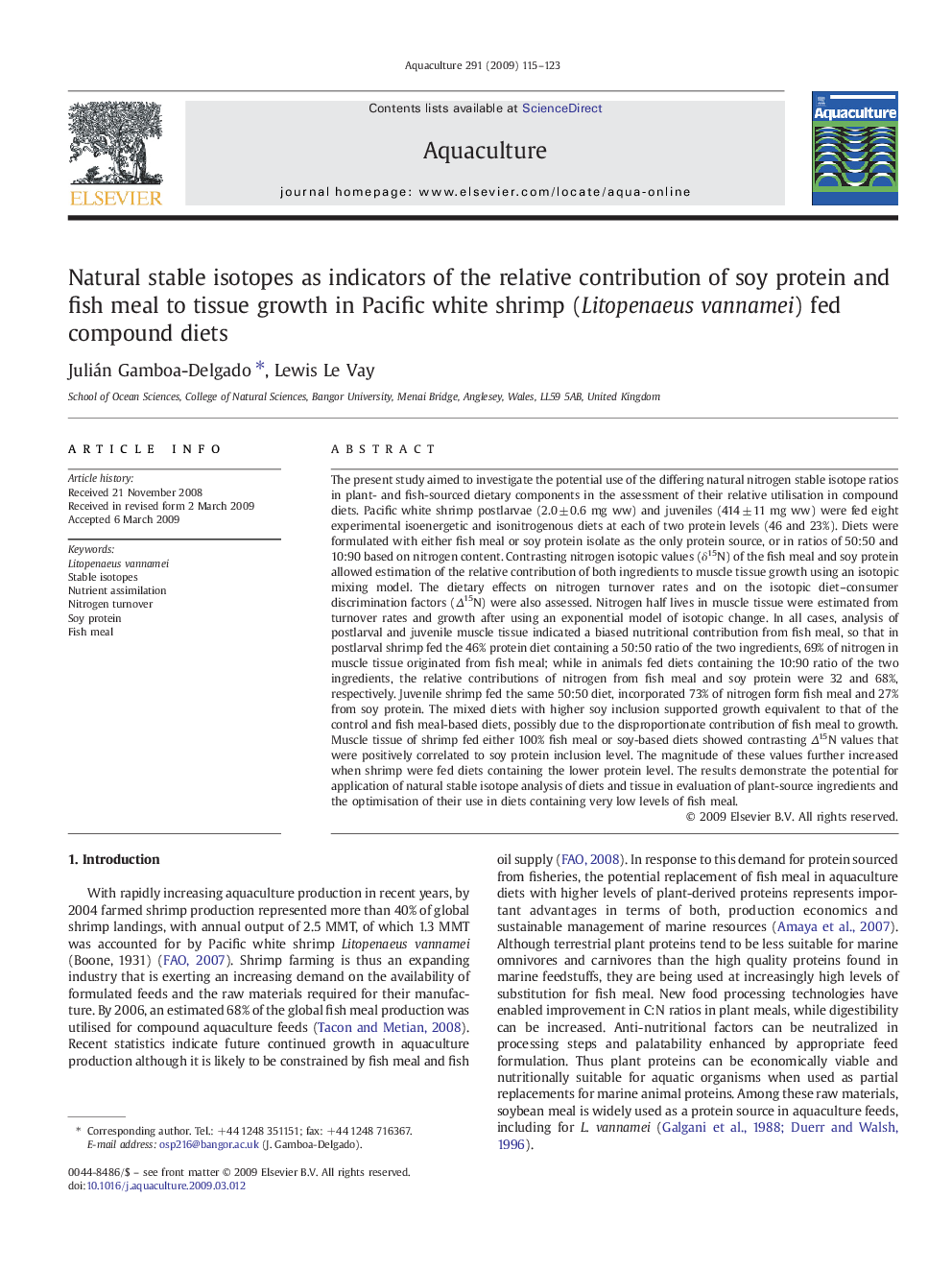| کد مقاله | کد نشریه | سال انتشار | مقاله انگلیسی | نسخه تمام متن |
|---|---|---|---|---|
| 2424109 | 1552945 | 2009 | 9 صفحه PDF | دانلود رایگان |

The present study aimed to investigate the potential use of the differing natural nitrogen stable isotope ratios in plant- and fish-sourced dietary components in the assessment of their relative utilisation in compound diets. Pacific white shrimp postlarvae (2.0 ± 0.6 mg ww) and juveniles (414 ± 11 mg ww) were fed eight experimental isoenergetic and isonitrogenous diets at each of two protein levels (46 and 23%). Diets were formulated with either fish meal or soy protein isolate as the only protein source, or in ratios of 50:50 and 10:90 based on nitrogen content. Contrasting nitrogen isotopic values (δ15N) of the fish meal and soy protein allowed estimation of the relative contribution of both ingredients to muscle tissue growth using an isotopic mixing model. The dietary effects on nitrogen turnover rates and on the isotopic diet–consumer discrimination factors (Δ15N) were also assessed. Nitrogen half lives in muscle tissue were estimated from turnover rates and growth after using an exponential model of isotopic change. In all cases, analysis of postlarval and juvenile muscle tissue indicated a biased nutritional contribution from fish meal, so that in postlarval shrimp fed the 46% protein diet containing a 50:50 ratio of the two ingredients, 69% of nitrogen in muscle tissue originated from fish meal; while in animals fed diets containing the 10:90 ratio of the two ingredients, the relative contributions of nitrogen from fish meal and soy protein were 32 and 68%, respectively. Juvenile shrimp fed the same 50:50 diet, incorporated 73% of nitrogen form fish meal and 27% from soy protein. The mixed diets with higher soy inclusion supported growth equivalent to that of the control and fish meal-based diets, possibly due to the disproportionate contribution of fish meal to growth. Muscle tissue of shrimp fed either 100% fish meal or soy-based diets showed contrasting Δ15N values that were positively correlated to soy protein inclusion level. The magnitude of these values further increased when shrimp were fed diets containing the lower protein level. The results demonstrate the potential for application of natural stable isotope analysis of diets and tissue in evaluation of plant-source ingredients and the optimisation of their use in diets containing very low levels of fish meal.
Journal: Aquaculture - Volume 291, Issues 1–2, 3 June 2009, Pages 115–123